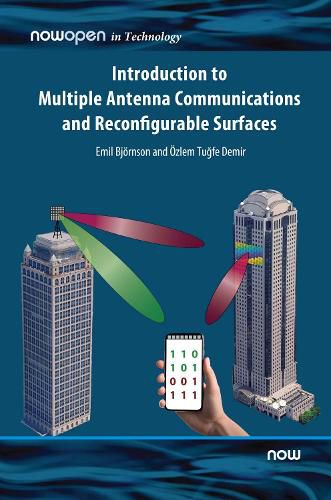Readings Newsletter
Become a Readings Member to make your shopping experience even easier.
Sign in or sign up for free!
You’re not far away from qualifying for FREE standard shipping within Australia
You’ve qualified for FREE standard shipping within Australia
The cart is loading…






This title is printed to order. This book may have been self-published. If so, we cannot guarantee the quality of the content. In the main most books will have gone through the editing process however some may not. We therefore suggest that you be aware of this before ordering this book. If in doubt check either the author or publisher’s details as we are unable to accept any returns unless they are faulty. Please contact us if you have any questions.
Wireless communication is the backbone of the digitized society, where everything is connected and intelligent. Access points and devices are nowadays equipped with multiple antennas to achieve higher data rates, better reliability, and support more users than in the past. This book gives a gentle introduction to multiple antenna communications with a focus on system modeling, channel capacity theory, algorithms, and practical implications. The basics of wireless localization, radar sensing, and controllable reflection through reconfigurable surfaces are also covered. The goal is to provide the reader with a solid understanding of this transformative technology that changes how wireless networks are designed and operated, today and in the future. The first three chapters cover the fundamentals of wireless channels, and the main benefits of using multiple antennas are identified: beamforming, diversity, and spatial multiplexing. The theory and signal processing algorithms for multiple-input multiple-output (MIMO) communications with antenna arrays at the transmitter and receiver are progressively developed. The next two chapters utilize these results to study point-to-point MIMO channels under line-of-sight (LOS) and non-LOS conditions, covering the shape of signal beams, impact of array geometry, polarization, and ways to achieve reliable communication over fading channels. The book then shifts focus to multi-user MIMO channels, where interference between devices is managed by spatial processing. The next chapter extends the theory to multicarrier channels and explains practical digital, analog, and hybrid hardware implementations. The last two chapters cover the role of multiple antennas in localization and sensing, and how reconfigurable surfaces can improve both communication and sensing systems. The text was developed as the textbook for a university course and builds on the reader's previous knowledge of signals and systems, linear algebra, probability theory, and digital communications. Each chapter contains numerous examples, exercises, and simulation results that can be reproduced using accompanying code.
$9.00 standard shipping within Australia
FREE standard shipping within Australia for orders over $100.00
Express & International shipping calculated at checkout
This title is printed to order. This book may have been self-published. If so, we cannot guarantee the quality of the content. In the main most books will have gone through the editing process however some may not. We therefore suggest that you be aware of this before ordering this book. If in doubt check either the author or publisher’s details as we are unable to accept any returns unless they are faulty. Please contact us if you have any questions.
Wireless communication is the backbone of the digitized society, where everything is connected and intelligent. Access points and devices are nowadays equipped with multiple antennas to achieve higher data rates, better reliability, and support more users than in the past. This book gives a gentle introduction to multiple antenna communications with a focus on system modeling, channel capacity theory, algorithms, and practical implications. The basics of wireless localization, radar sensing, and controllable reflection through reconfigurable surfaces are also covered. The goal is to provide the reader with a solid understanding of this transformative technology that changes how wireless networks are designed and operated, today and in the future. The first three chapters cover the fundamentals of wireless channels, and the main benefits of using multiple antennas are identified: beamforming, diversity, and spatial multiplexing. The theory and signal processing algorithms for multiple-input multiple-output (MIMO) communications with antenna arrays at the transmitter and receiver are progressively developed. The next two chapters utilize these results to study point-to-point MIMO channels under line-of-sight (LOS) and non-LOS conditions, covering the shape of signal beams, impact of array geometry, polarization, and ways to achieve reliable communication over fading channels. The book then shifts focus to multi-user MIMO channels, where interference between devices is managed by spatial processing. The next chapter extends the theory to multicarrier channels and explains practical digital, analog, and hybrid hardware implementations. The last two chapters cover the role of multiple antennas in localization and sensing, and how reconfigurable surfaces can improve both communication and sensing systems. The text was developed as the textbook for a university course and builds on the reader's previous knowledge of signals and systems, linear algebra, probability theory, and digital communications. Each chapter contains numerous examples, exercises, and simulation results that can be reproduced using accompanying code.